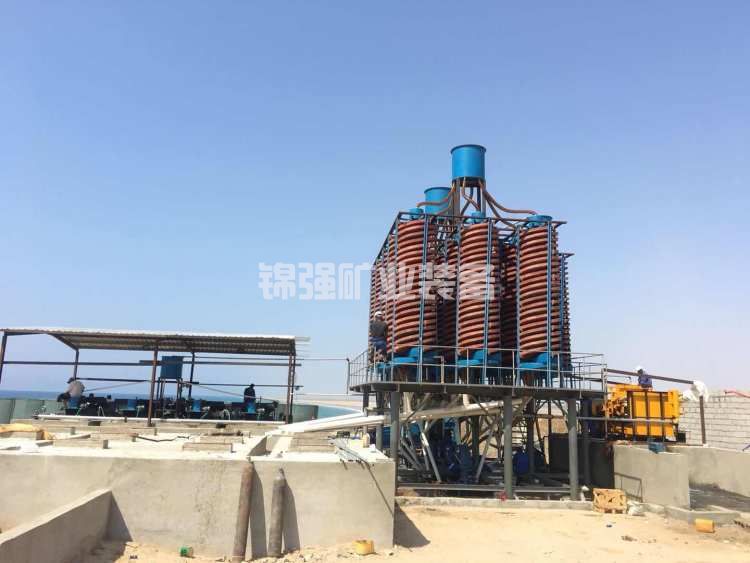 Service Phone:
+8619870423316
Service Phone:
+8619870423316
 Service Phone:+8619870423316
Service Phone:+8619870423316
current location: home > News and information > Equipment Q&A
update date:2023-07-20 03:51:15Number of views: author:admin
1、 Overview of Spiral Chutes
Spiral chutes are widely used in the fields of mining and mineral processing, and are used for sand mining on riverbanks, sandbanks, and streams. The structure design of the spiral chute is reasonable, installation is simple and convenient, beneficiation is stable, production efficiency is high, and it has strong adaptability to fluctuations in ore feed volume, concentration, grade, and particle size, and is noise free.
2、 Spiral chute recovery rate
The formula for calculating the recovery rate during mineral sorting is [actual concentrate quantity (ton) concentrate grade] ÷ (raw ore processing capacity (ton) raw ore grade)] 100%, and the obtained percentage is the mineral recovery rate. If the recovery rate is low when using spiral chutes to treat minerals, the closed loop beneficiation method can also be used to clean and separate tailings.
3、 How to improve the recovery rate of spiral chutes
The low mineral recovery rate of spiral chute sorting also means that the tailings have serious tailing. At this time, it should be considered to separate the tailings again to extract useful elements inside. In actual operation, the amount of concentrate should be minimized as much as possible, and the grade of the concentrate should be raised to the standard of the finished product. The amount of intermediate ore should also be reduced to achieve the grade of secondary concentrate and reserved for secondary improvement. And the amount of tailings should be maximized as much as possible. When performing secondary sorting on the primary tailings, the tailings should be discarded and reduced, and the amount of intermediate ore should be increased by mixing it with the primary intermediate ore for tertiary recovery. This will greatly improve the recovery rate. Of course, there are more operational details that cannot be summarized. Friends who want to learn more can contact us.
